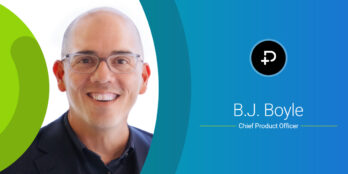
How the Pandemic is Driving the Need for Senior Care EHR
 3 min
3 min
The one-year mark from the start of the COVID-19 pandemic has come and gone, but senior care communities are noticing permanent changes that have caused providers to re-evaluate their need for an Electronic Health Record (EHR) solution. COVID-19 has uncovered the need for healthcare facilities to work from home while still optimizing efficiencies as much as possible. Additionally, advanced clinical decision-making tools and analytics, while always important, quickly became critical to a facility’s success during this unprecedented time.
The need for an EHR
As the world continues to rely on remote operations, some facilities are finding that a non-cloud based Electronic Medical Record (EMR) solution can be more difficult to connect to remotely. If your EMR does not provide the ability to document everything in the system, and you are still on paper for some processes, it will restrict your ability to work remotely even more.
Furthermore, as facilities reassessed and created new processes to combat the impact of the pandemic on their residents and staff, additional health and safety job duties were assigned to staff, such as performing temperature and health screenings for all visitors, as well as rapid COVID-19 tests. This in turn increased the need for staff’s “normal” day to day work to be as fully optimized and efficient as possible.
Choosing the right EHR
A critical first step is to identify your top 10 to 20 requirements for a system. For example, some key questions you should determine when selecting your EHR could be:
- Do you need to transfer information between levels of care?
- What key integrations do you need to have in place to reduce manual data entry?
- Who is the key project team and what are their responsibilities?
- What information must be included in reporting and dashboards?
- What workflow processes are critical to optimize?
Identifying these requirements ahead of time and verifying them with the vendor will avoid major issues down the road in the midst of implementation.
How to make an EHR work for you
Once you have selected your EHR, it’s important to create an implementation plan to ensure you are using the solution to create better efficiencies in your organization. To do this, you need to establish clear project team roles. There should be a project sponsor who is the project champion and a decision maker. Identify key staff in all areas who can be super users both pre and post implementation, and in nursing there should be at least one person on each shift. Having a good project manager on the client side will also be beneficial in navigating a complex implementation on your behalf.
It’s also important to ensure you eliminate any barriers in place that could keep your staff from optimizing the solution. A facility’s technology infrastructure has a direct impact on the implementation of an EHR solution, so how can you make it work for your own facility?It’s critical to have the right infrastructure in place before implementing any kind of new technology. By having proper infrastructure, such as reliable Wi-Fi, you will remove the barriers and eliminate common frustrations your staff could experience when implementing a new system.
June 10, 2021






